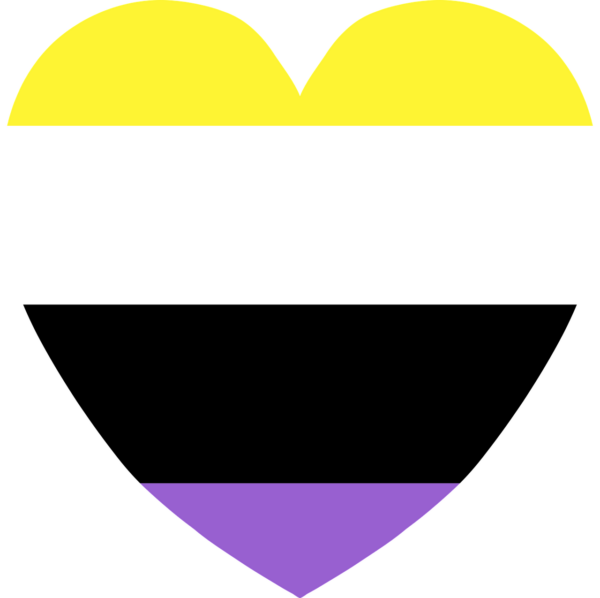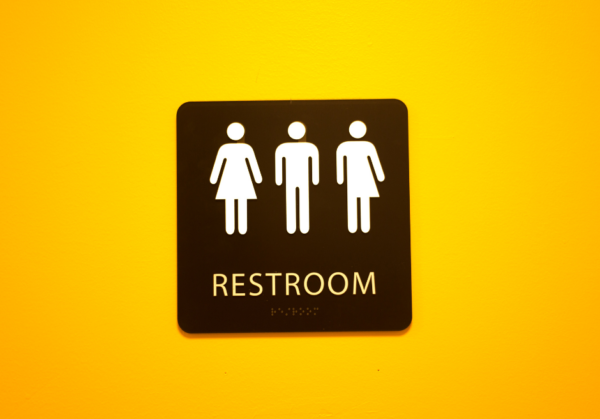1.2 million adults in the United States identify as nonbinary. With that in mind, take the time to increase your understanding of the nonbinary experience. Keep reading to learn why nonbinary people should be included in gender equity initiatives, what challenges they often face at work, and what you can do to increase gender inclusion at your workplace.
What does “nonbinary” mean?
“Nonbinary” is an umbrella term that includes a range of gender identities. Nonbinary goes beyond “man” and “woman” to include people who don’t fit into either category and don’t subscribe to gender norms. Instead, nonbinary people might identify with more than one gender, a separate gender, or move along a spectrum over time. Gender identity is not the same as sexual orientation, so don’t make assumptions about who someone’s life partner or spouse is.
Nonbinary people may go by they/them pronouns. They might choose to use she/her or he/him pronouns too. Of course, it’s best practice to ask for someone’s pronouns when getting to know them.
How does nonbinary relate to gender inclusion?
When we talk about gender in light of diversity, equity, inclusion, and belonging initiatives, the conversation typically centers around male and female equality. While great strides have been made, this conversation still fails to acknowledge the whole picture. For true gender equality in the workplace, nonbinary individuals need to be taken into account. They have unique experiences that deserve care, attention, and advocacy too.
Why is it essential to include nonbinary individuals in gender equity initiatives?
Historically, LGBTQ+ and nonbinary rights have been vastly overlooked. While positive changes have been made, we still have a long way to go before our companies are truly inclusive. Gender non-conforming people are more likely to be unemployed. When they do find employment, they often make less money and feel less support. And the executive order protecting LGBTQ+ people from discrimination at work wasn’t signed into law until 2021.
From difficulty filling out forms that allow only “male” or “female” to outright harassment, nonbinary people continue to face challenges that they shouldn’t need to. To build a truly equitable and safe space for all employees, it’s important to address these issues and meet the needs of nonbinary people.
Challenges nonbinary individuals face regarding gender equality in the workplace
Before learning how to better support nonbinary people, we have to first acknowledge the difficulties they may face at work.
Their gender identity is not acknowledged
For gender non-conforming people, it can be uncomfortable or difficult to reveal one’s identity at work. Those negative feelings are only amplified if colleagues fail to acknowledge or respect that identity. Misgendering, or using the wrong pronouns, makes it hard for nonbinary employees to bring their authentic selves to work and might even make them feel unsafe.
Many workplaces are designed around a binary gender model
It can be hard for LGBTQ+ employees to feel comfortable in environments that were built with a binary gender experience in mind. For example, office bathrooms or locker rooms might be labeled “male” or “female,” there might be resource groups or activities only open to specific genders, and the company culture may make it difficult to share one’s pronouns.
May experience microaggression
A microaggression is a subtle act of discrimination that may or may not be intentional. Too often, LGBTQ+ people are subjected to microaggressions that are disrespectful and offensive. Assuming a nonbinary person should act according to gender stereotypes, asking invasive questions, or using derogatory slang are all examples of microaggressions that should be avoided.
Access to gender-affirming healthcare
Nonbinary is not the same as transgender, however, some nonbinary individuals pursue gender-affirming healthcare. Not all have access to resources through their employer or the support they need to express themselves freely at work.
Lack of understanding and allyship from colleagues
Not all employees understand the nonbinary experience. This can make nonbinary people feel like they carry the burden of explaining themselves to others. It can also result in gossip or bullying. Allies can help relieve this burden, and the absence of their support can make life more difficult for LGBTQ+ people.
How to create a more inclusive environment for nonbinary employees
Get intentional about building a more inclusive workspace for nonbinary employees. These ten steps can help move your organization in the right direction.
1. Implement training and awareness programs
Too often, harassment and discrimination come from a lack of education and understanding. To remedy this, provide training so employees can increase their sensitivity to nonbinary coworkers. Increasing awareness can help decrease the discrimination many LGBTQ+ people face at work and build a more positive environment that everyone can enjoy.
2. Evaluate and update company policies for inclusivity
If your organization doesn’t have one already, develop a clear policy that addresses gender inclusion for all people. Review existing policies for inclusive language. Remove references to the gender binary, like “he/she” or “men and women.” Instead, use gender-neutral terms like “you” or “employee.” And craft an Equal Opportunity Employer Statement to demonstrate your commitment to inclusive hiring and establish a no-tolerance environment for discrimination.
3. Create all-gender restrooms
If your company has an in-person office, offer gender-neutral restrooms. This avoids the discomfort that comes from being forced to use a restroom that does not align with one’s gender identity, or opening a conversation about gender expression before one is ready. Well-structured gender-neutral restrooms decrease stress and offer privacy to all employees.
4. Facilitate open communication with nonbinary employees
Open communication can help prevent nonbinary individuals from feeling isolated or unsafe at work. Create a space where conversation is welcomed. If they’re open to sharing, ask LGBTQ+ employees for feedback on how the workplace could be more inclusive or what they’d like others to know about their experience. Proactively support your nonbinary employees’ careers too by offering skills development or assistance with projects.
5. Establish dress codes that allow gender expression
Your workplace may have a dress code, but that doesn’t need to get in the way of gender expression. Avoid requirements that make gendered distinctions or assumptions—stay neutral, and simply require that employees of any gender dress appropriately for the situation. For instance, you might request that employees wear suits to meet with clients, but don’t specify skirts or pants. Or you might require employees who work with machinery to tie back long hair, but don’t say “Women must wear hair up.”
6. Promote pronoun use and gender-neutral salutations
Make sharing gender pronouns at work the norm. Encourage employees to include pronouns in email sign-offs or messaging accounts. Ensure that your forms, job applications, and data collection surveys are inclusive of all gender identities. Begin conversations with inclusive greetings, like “Hello, all!” instead of “Hey, guys!” Create a space for those within your organization to feel comfortable being themselves and welcome candidates to do the same.
7. Create channels for reporting discrimination and harassment
Establish a process for employees to report discrimination and bullying. Make it user-friendly and offer options for anonymous reporting. And don’t stop at hearing employee concerns—respond appropriately. Have a system in place to quickly and consistently address any concerns.
8. Recognize gender diversity awareness days
Recognizing gender diversity in a way that includes gender non-conforming individuals helps increase awareness and acceptance. Take time to celebrate and appreciate your LGBTQ+ employees. National Coming Out Day, Pride Month, Nonbinary Awareness Week, and the International Day Against Homophobia, Transphobia, and Biphobia could be great opportunities for this.
9. Actively recruit nonbinary talent
Diversity contributes to organizational success, employee retention, and innovation. Recruiters who know this build a recruiting strategy that proactively connects with a diverse range of applicants. And the strongest recruiting strategy goes beyond the diversity of race, ethnicity, or age to include LGBTQ+ people. Inclusive job descriptions, structured interviews, and a diverse interview panel can help ensure job seekers of all gender identities feel welcome to apply. Whenever possible, include LGBTQ+ employees in your hiring team for more fair decision-making processes.
10. Advocate for nonbinary rights and gender inclusion
LGBTQ+ rights are human rights. Become a better ally to nonbinary employees by advocating for the LGBTQ+ community inside and outside of work. If you are a supervisor or manager, it’s especially important to set a good example for others. Speak up if you hear disrespectful comments and correct others who neglect to use someone’s preferred pronouns. Ask how you can support colleagues who decide to pursue gender-affirming care. And commit to personal education—learn how you can become more supportive and receptive to your nonbinary colleagues.
The most important thing you can do when striving for a more inclusive workplace is to adopt a positive attitude. Be as welcoming as possible, stay open to learning more, and make adjustments as needed.
Regularly seek input from nonbinary employees
Don’t put your LGBTQ+ employees on the spot and assume they feel comfortable guiding policy change or providing education. However, it’s important to maintain open channels of communication for nonbinary employees to give feedback whenever they feel it’s needed. It’s also a good idea to reach out and ask what would help make them feel more supported or included at work. Be ready to right wrongs and learn to do better in situations where efforts fall short.
Ensure a more gender-inclusive workplace today
Expand gender inclusivity to include nonbinary employees. Build a supportive workspace with education, communication, and policy change. Welcome feedback, actively pursue allyship and build a welcoming workspace from the ground up with an inclusive hiring process. Engage hiring tools that mitigate bias, like Clovers, and lay the foundation for true gender inclusion today!



